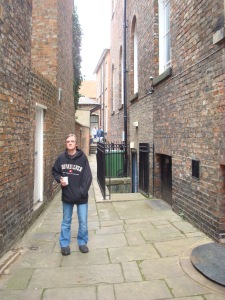In Bristol, I had come to know homeless people organically because I’d lived and worked in a part of the city where homelessness was the local ‘industry’. Stokes Croft had several hostels for homeless people, services for people with drink and drug problems were sited there and the area (at the time) had a reputation for being ‘rough’; property prices were at rock bottom and many shops were boarded up. There were lots of squats and derelict buildings in which homeless people had created ‘home spaces’. I have two dogs and smoke rollies and I found either the dogs or tobacco acted as ice breakers in speaking with homeless people. My approach in Bristol was simply to strike up conversations with homeless people, explain I was an archaeologist interested in public space and how people use cities – the routes and journeys they make, the places they feel ‘attachment’ to – and see whether anyone would be interested in joining me in archaeologically mapping and recording contemporary homelessness.
In York, a city I am very new to, I felt I should try a different approach. I made contact with Arc Light (a centre for homeless people) and asked whether I might work with residents to map and document homelessness in York. Initially, I met with several residents and ex-residents and support workers and we began with a short two hour walk around the centre of York. This was a ‘getting to know you’ exercise and we’ll update the blog as we undertake fieldwork.
Something that was immediately obvious to me is that homelessness in York is less ‘visible’ than it is in Bristol. York is a smaller city, of course, but it is also a heritage city, that is, a large proportion of York’s economy centres around tourism and I’m keen to explore whether this impacts how homelessness is dealt with.

The basic homeless problem is the same in any city, just varies in numbers depending on the rules of said council,police,and inferstructure to support them,or be against them.Depending on there views,and those of the general public(tax payers).
As some one who has been homeless in many cities and towns,some of which being of heritage status.Do fall into the category of its not good for tourism and is best pushed away elsewhere.But they will never rid it completeiy, no matter how hard they try,as it is part of society.Allways has been allways will be.